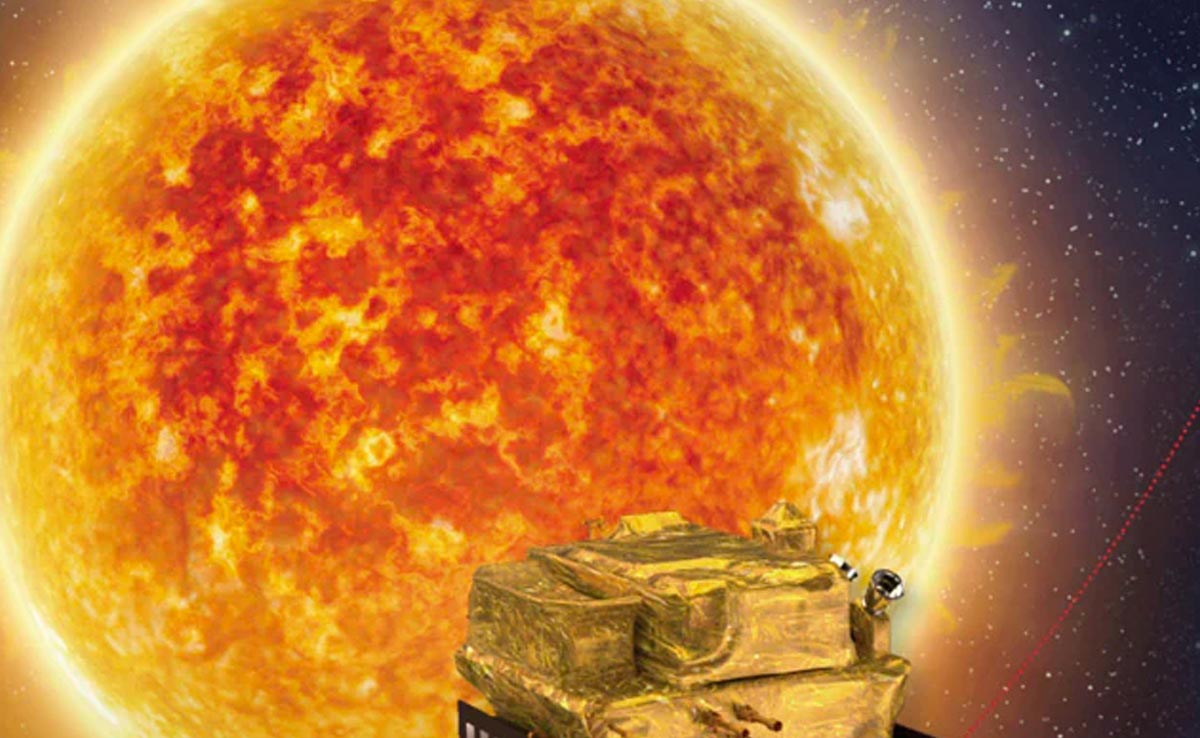2024-01-05 01:38:50

Aditya-L1 satellite will conduct experiments to better understand the Sun. (Representational)
New Delhi:
India’s “celestial surya namaskar” is about to reach its climax. India’s first space-based solar observatory — the Aditya-L1 satellite — is going to check-in to the home it is likely to occupy for the next five years. The Indian Space Research Organization (ISRO) says the satellite will reach its destination orbit on January 6 at 4 pm.
In its 126-day journey that began on September 2 last year, it has traversed about 3.7 million kilometers as it went about a circuitous route to reach its “karambhoomi” or “land of action”. ISRO says Aditya is healthy and scientific results have already started flowing in as it has beamed back beautiful images of the full disc of the Sun.
Aditya’s home is in a halo-shaped orbit, some 1.5 million kilometers away from Earth. Although closer to the Sun than the Earth, the orbit will still be far, far away, since the Sun is some 150 million kilometers away from us.

From its final vantage point which is called the Lagrangian Point-1, the 1,475 kilogram Aditya-L1 satellite will conduct scientific experiments to better understand the star of our solar system, which remains an enigma.
“The Indian solar observatory will have an uninterrupted and continuous view of the Sun and will help us understand space weather. It will act like a forecasting and warning platform for solar storms,” said Nigar Shaji, the Project Director for Aditya-L1 satellite at the U R Rao Satellite Center, Bengaluru.
A solar storm is a large-scale magnetic eruption on the Sun, which can effect the entire solar system.
“Since Aditya-L1 will look at Sun continuously, it can warn us of imminent solar electro-magnetic effects on Earth and protect our satellites, and other power electrical and communications networks from getting disrupted. This will help continue normal operations by operating them in safe modes, till the solar storm passes by,” S Somanath, Chairman, ISRO, told NDTV, adding that India has assets worth over Rs 50,000 crores in space including over 50 operational satellites that need to be protected against the effects of the Sun.

“Aditya-L1 satellite will act as a space-based protector of sorts, keeping an eye on solar flares and ensuing solar storms,” he explained.
When a large solar flare comes out of the Sun, it can fry the electronics of the satellites. To protect them, space engineers shutdown the electronics and keep them in safe shutdown state till the highly-charged storm passes over.
“Aditya-L1 is an intelligent satellite. It will never sleep and will keep a hawk’s eye on the activities of Earth’s nearest star to warn when the Sun’s wrath will impact us,” said Prof Somak Raychaudhury, astrophysicist at Ashoka University.
Prof Durgesh Tripathi, a scientist at Inter-University Centre for Astronomy and Astrophysics (IUCAA) in Pune, said, “the complex space telescope” is a once-in-a-lifetime opportunity for scientists.
The Scientific Suite on Aditya-L1
ISRO says in its statement that the major scientific objectives of Aditya-L1 mission are to:
- Study solar upper atmospheric (chromosphere and corona) dynamics
- Study chromospheric and coronal heating, the physics of the partially ionized plasma, the initiation of the coronal mass ejections, and flares
- Observe the in-situ particle and plasma environment, providing data for the study of particle dynamics from the Sun
- Study the physics of solar corona and its heating mechanism
- Diagnostics of the coronal and coronal loops plasma: Temperature, velocity and density
- Development, dynamics and origin of CME (Coronal Mass Ejections)
- Identify the sequence of processes that occur at multiple layers (chromosphere, base and extended corona) which eventually leads to solar eruptive events
- Magnetic field topology and magnetic field measurements in the solar corona
- The origin, composition and dynamics of solar wind, the drivers for space weather
Aditya L1,ISRO Aditya L-1 Mission,ISRO Sun Mission
Source link
![]()
